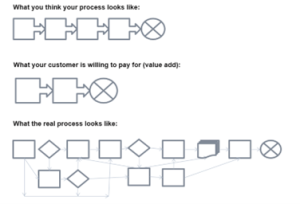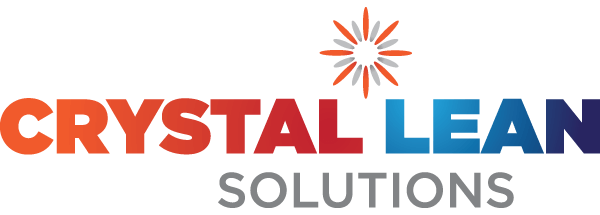Process Mapping
In this blog post, we will explore the concepts of process mapping, a key tool within the Lean Methodology Framework, and how it can help organisations improve their processes.
What is a process?
A series of activities that transform a set of inputs into a specific set of outputs. Everything we do is a process!
What is a Process Map?
A process map (also known as process flowchart or Diagram) is a visual representation of the sequential steps within in a business process. The process map includes each critical process step along with process inputs at outputs.

A process map represents how a process actually operates and is a living document that should be constantly reviewed and updated.

The purpose of process mapping is to provide a clear insight into a process, aiding the identification of non-value adding activities (i.e., any activity which absorbs resources but creates no value), and potential areas for improvement.
What are Non-Value Added activities?
Typically, when we talk about non-value added activities, we are talking about the 8 Wastes. Process papping helps us identify these wastes within the process. When we know what the wastes are we can put a plan in place to remove them.
Transport: Unnecessary transfer of materials, tools, equipment, documents, information
Inventory: Excess Inventory, producing or storing more than customer demand, building up unnecessary stocks.
Motion: Unnecessary movement of people, walking, searching.
Waiting: Unnecessary waiting, delays between departments, materials delays, chasing signatures (travel, searching).
Overproduction: Producing too much or too many, before it is needed.
Overprocessing: Duplicate or redundant operations, performing or producing to a higher specification than is required.
Defects: Failing to produce quality work first time. Generating rework or scrap. Not delivering the finish or service “right first time”.
Skills Underutilised: Underutilising skills, not utilising the skills or knowledge of employees. Not learning from past mistakes/issues
How to Create a Process Map:
- Define your process boundaries (start and end point)
- Go to Gemba (where is action is happening)– remember you are developing an “as is” map of the process.
- Map out the key steps of the process (Involve as many people in process as possible)
- For each step, identify and record the inputs.
- For each step, identify and record the outputs
![]()
Different Types of Process Maps:
There are a variety of Process Maps that can be used depending on the complexity of the process or your business requirements.
Typical Process maps would include:
- Basis Flow charts
- Detailed Process Maps
- Cross Functional (Swimlane maps)
- SIPOC (Suppliers, inputs, processes, outputs, and customers)
- Value Steam Maps
Key Benefits of Processes Mapping:
- Clearly defines and documents how a process should be completed.
- Increase understanding of the current process
- Helps identify how a process can be improved by removing non-value adding activities.
- Aids Standardisation of processes.
Process Mapping is a simple but a powerful tool that can be used across any process in an organisation. It provides the business with a visualisation of how a process actually works and is the starting point for all Process Improvement activities.
